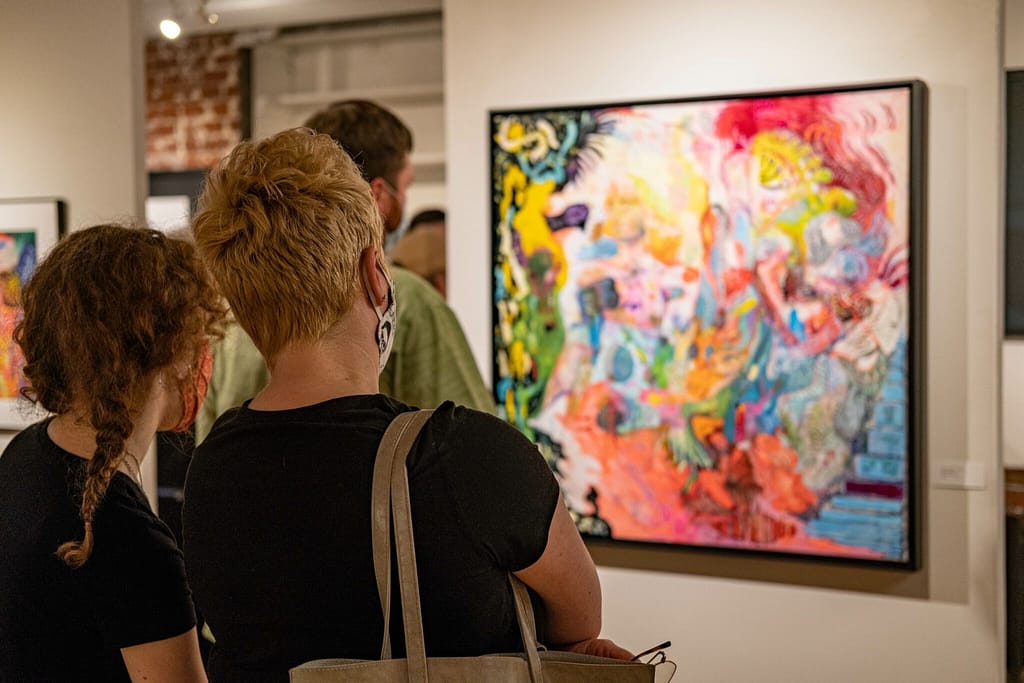Your cart is currently empty!
Five Ways Art Benefits Mental Health

Whether maintaining your mental health is a part of your daily life or it’s something you only think about once in a while, art is a great practice in a healthy lifestyle. Here are five ways that art benefits mental health:
1. Artistic groups and communities can provide a safe, supportive place for reflection
When the environments in our daily lives do not allow us to discuss our pain, grief, or personal struggles, an art practice or group can provide solace through both the act of creating and through connecting with other like-minded individuals. These groups can reduce barriers to discussing mental health issues and in turn empower a sense of hope, trust, and community.
2. Art practice improves self-esteem and self-confidence
Through the practice of art, participants in a study reported that doing something new built their self-esteem. They also reported improved confidence to confront underlying mental health difficulties of which they were unable prior, and their ability to feel good about themselves increased.
Great art teachers and educators use a strengths-based approach to help to facilitate the building of self-esteem and confidence in the classroom.
3. Mental health-themed exhibitions create a platform for viewers to reflect on mental health, increase awareness, reduce stigma, and encourage conversation.
Attending an exhibition related to mental health allows viewers to consider their own mental well-being and step into the inner world of the artist and find ways in which they relate.
In a study to find the outcomes of a mental health exhibition on artists and the community which it was exhibited in, a participant says, “I spoke to some ladies and gentlemen. I spoke to different people. Someone raised the aspect of depression on one of the paintings and she started talking about what that meant to her and just started talking about mental health and mental illness and she started opening up about her experiences with it. And I think that’s part of the whole beauty of the Rural Art Road-show is that it creates discussions about mental health and recovery.” (Participant 2)
4. Art classes facilitate friendships and connections through common experiences, projects, or goals.
Social inclusion and engagement is an important part of maintaining one’s mental health. Art classes allow individuals to bond with others through the process and completion of a project which shares a similar end-goal.
Shared experiences promote a sense of community and belonging.
5. Ongoing art programs promote the cultivation of identity
Those who participated in studies of art programs reported a stronger sense of self after the program’s conclusion. These participants understood themselves better, and therefore were able to connect with their artwork and others more easily. They also reported that as their confidence and skill sets grew, so did their ability to identify themselves as artists, both internally and in conversations with others.
Art is so powerful! These are only a few of the great benefits of art on mental health. Art can be a great coping strategy for many people. It is used in therapeutic practices, and communities come together to celebrate it. No matter what you’re going through, you don’t have to go through it alone.
We encourage you to stop by GoggleWorks’ Schmidt Gallery and Studio 240 to see two exhibitions which explore important topics in mental health, coming of age, and addiction: You Miss 90% of the Shots You Don’t Take: The Art of Amos Lemon Burkhart (on view until July 30) and Against The Wind (on view until July 23). Click here to be taken to the gallery webpage.
If you are experiencing a mental health crisis, do not wait to ask for help. Visit https://www.pa.gov/guides/mental-health/ for resources to find help now.
“Stay Alive / Make Art.” –Amos Lemon Burkhart Foundation
The studies referenced in this article are linked below:
Art as therapy: an effective way of promoting positive mental health? Deirdre Heenan. Disability & Society Vol. 21, No. 2, pp. 179–191, March 2006.
Promoting mental health through a Rural Art Roadshow: perspectives of participating artists
Springer. Tony Barnett, Heather Bridgman, Josephine de Deuge. International Journal of Mental Health Systems 13, June 2019.
Art and Mental Health Recovery: Evaluating the Impact of a Community-Based Participatory Arts Program Through Artist Voices. Tracey A. Bone. Community Mental Health Journal 54, November 2018.
Therapeutic outcomes in a museum? “You don’t get them by aiming for them”. How a focus on arts participation promotes inclusion and well-being. Wendy Bryant, Jackie Lawson, Frances Reynolds, Lesley Wilson. Arts & Health 7(3):1-14, June 2015.